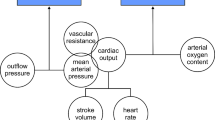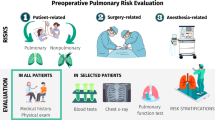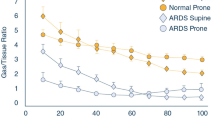Summary
1) Patients with ischaemic heart disease have a substantial increased risk to develop perioperative myocardial infarction (reinfarction). 2) The incidence of cardiac complications increases when surgery is performed on the great vessels and in the intrathoracic and upper abdominal region. 3) The coice of the anaesthetic is of minor importance. However, isoflurane may be particularly susceptible to produce a coronary steal phenomenon and therefore should be used with caution in patients with IHD. 4) Experience and skill of the anaesthetist is of greater importance to avoid ischaemia. Invasive monitoring and agressive treatment of haemodynamic disorders may reduce the risk of ischaemia. 5) During recovery patients with IDH must be controlled carefully at a recovery ward or ICU. 6) Preoperative evaluation of the individual risk and specific treatment of haemodynamic and metabolic disorders are mandatory. Psychologic guidance of the patients throughout the preoperative period is important.
Zusammenfassung
1. Patienten mit gesicherter Coronar- bzw. Infarktanamnese haben ein erhöhtes Risiko, in der perioperativen Phase einen Reinfarkt bzw. andere kardiovasculäre Komplikationen zu erleiden. 2. Eine besondere Gefährdung liegt bei Eingriffen an den grossen Gefässen, im Thorax und oberen Abdominalraum vor. 3. Das Anaesthesieverfahren spielt hinsichtlich des Risikos eine untergeordnete Rolle. Das neue Inhalationsanaestheticum Isofluran sollte wegen der eventuellen Folge eines Coronary-Steal-Syndromes zurückhaltend bei Coronarpatienten verwendet werden. 4. Anaesthesieführung und Erfahrung des Anaesthesisten sind hingegen von herausragender Bedeutung. Gegebenenfalls invasives Monitoring und aggressive Therapie von Kreislaufveränderungen können das Ischämierisiko mindern. 5. In der Aufwachphase müssen Stoffwechsel- und Kreislaufreaktionen (Schmerz, Muskelzittern, Stress) kontrolliert werden. Patienten mit bekanntem Coronarrisiko gehören auf eine Aufwachbzw. Intensivstation. 6. Kenntnis des Coronarrisikos und adäquate medizinische Vorbehandlung des Patienten sind unabdingbare Massnahmen. Versäumnisse in dieser Phase sind im weiteren periop. Verlauf nur schwer kompensierbar.
Similar content being viewed by others
Literatur
Rao TLK, El-Etr AA (1981) Myocardial reinfarction following anesthesia in patients with recent infarction. Anesth Analg (Cleve) 60:271–272
Slogoff St, Keats AS (1985) Does perioperative myocardial ischemia lead to postoperative myocardial infarction? Anesthesiology 62:107–114
Steen PA, Tinker JH, Tarhan S (1978) Myocardial reinfarction after anaesthesia and surgery. JAMA 239:2566–2570
Tarhan S, Moffitt EA, Taylor WF (1972) Myocardial infarction after general anesthesia. JAMA 220:1451–1454
Author information
Authors and Affiliations
Rights and permissions
About this article
Cite this article
Kettler, D. 36. Spezialproblem Coronarpatient: Sicht des Anaesthesisten. Langenbecks Arch Chiv 372, 233–236 (1987). https://doi.org/10.1007/BF01297820
Issue Date:
DOI: https://doi.org/10.1007/BF01297820




